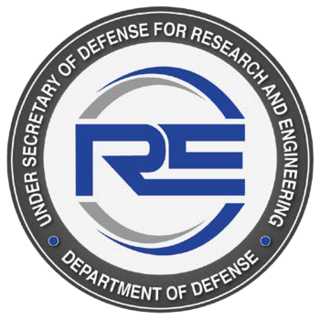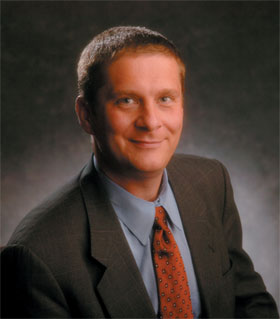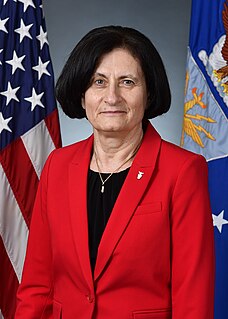Related Research Articles

The Defense Advanced Research Projects Agency (DARPA) is a research and development agency of the United States Department of Defense responsible for the development of emerging technologies for use by the military.

Lawrence Livermore National Laboratory (LLNL) is a federal research facility in Livermore, California, United States, founded by the University of California, Berkeley in 1952. Originally a branch of the Lawrence Berkeley National Laboratory, the Lawrence Livermore laboratory became autonomous in 1971 and was designated a national laboratory in 1981.

The National Science Foundation (NSF) is an independent agency of the United States government that supports fundamental research and education in all the non-medical fields of science and engineering. Its medical counterpart is the National Institutes of Health. With an annual budget of about $8.3 billion, the NSF funds approximately 25% of all federally supported basic research conducted by the United States' colleges and universities. In some fields, such as mathematics, computer science, economics, and the social sciences, the NSF is the major source of federal backing. In 2016, there were 6.9 million scientists and engineers employed in the United States. The 2020 NSF budget, split per capita, amounts to $1200 per US scientist per year; hence, it is not a practical funding source for most scientists.

System Planning Corporation (SPC) is a Virginia-based corporation founded in 1970 that produces military electronics, such as flight control systems, radar, and Systems Engineering and Technical Assistance in airwarfare, cybersecurity, program management and research of advanced weapons systems, advanced space systems and advanced microsystems for the United States Department of Defense (DoD). SPC was acquired by ECS Federal, LLC in 2015. It is principal support contractor to cabinet-level departments, including the Department of Defense, Justice and State, and Homeland Security.

Brain implants, often referred to as neural implants, are technological devices that connect directly to a biological subject's brain – usually placed on the surface of the brain, or attached to the brain's cortex. A common purpose of modern brain implants and the focus of much current research is establishing a biomedical prosthesis circumventing areas in the brain that have become dysfunctional after a stroke or other head injuries. This includes sensory substitution, e.g., in vision. Other brain implants are used in animal experiments simply to record brain activity for scientific reasons. Some brain implants involve creating interfaces between neural systems and computer chips. This work is part of a wider research field called brain–computer interfaces.
JASON is an independent group of elite scientists which advises the United States government on matters of science and technology, mostly of a sensitive nature. The group was created in the aftermath of the Sputnik launch as a way to reinvigorate the idea of having the nation's preeminent scientists help the government with defense problems, similar to the way that scientists helped in WWII but with a new and younger generation. It was established in 1960 and has somewhere between 30 and 60 members. Its work first gained public notoriety as the source of the Vietnam War's McNamara Line electronic barrier. Although most of its research is military-focused, JASON also produced early work on the science of global warming and acid rain. Current unclassified research interests include health informatics, cyberwarfare, and renewable energy.

The Defence Science and Technology Laboratory (Dstl) is an executive agency of the Ministry of Defence of the United Kingdom. Its stated purpose is "to maximise the impact of science and technology for the defence and security of the UK". The agency is headed by Doug Umbers as its (interim) Chief Executive, with the board being chaired by Adrian Belton. Ministerial responsibility lies with the Minister for Defence Procurement.
James George "Jim" Mitchell is a Canadian computer scientist. He has worked on programming language design and implementation, interactive programming systems, dynamic interpreting and compiling, document preparing systems, user interface design, distributed transactional file systems, and distributed, object-oriented operating systems. He has also worked on the design of hardware for computer graphics, high-level programming language execution, and audio input/output.
The Office of Science is a component of the United States Department of Energy (DOE). The Office of Science is the lead federal agency supporting fundamental scientific research for energy and the Nation’s largest supporter of basic research in the physical sciences. The Office of Science portfolio has two principal thrusts: direct support of scientific research and direct support of the development, construction, and operation of unique, open-access scientific user facilities that are made available for use by external researchers.

A cyborg —a portmanteau of cybernetic and organism—is a being with both organic and biomechatronic body parts. The term was coined in 1960 by Manfred Clynes and Nathan S. Kline.
The IEEE Corporate Innovation Recognition was established by the IEEE Board of Directors in 1985. This award is presented for outstanding and exemplary contributions by an industrial entity, governmental, or academic organization, or other corporate body.

The Under Secretary of Defense for Research and Engineering, abbreviated USD (R&E), is a senior official of the United States Department of Defense. The USD (R&E) is charged with the development and oversight of DoD technology strategy for the DoD. The post has at various times had the titles Assistant Secretary of Defense for Research and Engineering, or Director of Defense Research and Engineering (DDR&E). The latter title has itself historically varied between the rank of under secretary and that of assistant secretary.

Timothy J. Broderick, F.A.C.S., is Professor of Surgery and Biomedical Engineering at the University of Cincinnati, where he has served on the faculty since 2003. He also serves as Chief of the Division of Gastrointestinal and Endocrine Surgery and is Director of the Advanced Center for Telemedicine and Surgical Innovation (ACTSI). He has flown on the NASA KC-135 parabolic laboratory and dived in the NASA Extreme Environment Mission Operations (NEEMO) program to develop advanced surgical technologies for long duration space flight.
The White House BRAIN Initiative, is a collaborative, public-private research initiative announced by the Obama administration on April 2, 2013, with the goal of supporting the development and application of innovative technologies that can create a dynamic understanding of brain function.

Geoffrey S. F. Ling, M.D., Ph.D., is the CEO of On Demand Pharmaceuticals. He is also a medical doctor who retired from the United States Army as a colonel. He served as the founding director of the Defense Advanced Research Projects Agency (DARPA) Biological Technologies Office from 2014 until 2016. He was considered to be the "US Army's premier subject matter expert on traumatic brain injury (TBI)", and was for years the only neuro-intensive care specialist in the US military.

Stephen Joseph Lukasik was an American physicist who served in multiple high-level defense and scientific related positions for advancing the technologies and techniques for national defense and the detection and control of diverse types of weapons of mass destruction, especially nuclear devices. He was the second longest serving Director of DARPA - the Defense Advanced Research Projects Agency – during which numerous new technologies including packet and internet protocols were developed. He was also the first Chief Scientist of the Federal Communications Commission where he created its Office of Science and Technology and which facilitated the commercial deployment of new technology that included spread spectrum technology.
The Biological Technologies Office (BTO) is one of the seven technical offices within DARPA, an agency of the U.S. Department of Defense that is responsible for the development of advanced technology for national security. BTO was created in 2014 by combining some programs from the Defense Sciences Office (DSO) and the Microsystems Technology Office (MTO). The office focuses on basic and applied research in the areas of gene editing, biotechnologies, neurosciences and synthetic biology — from powered exoskeletons for soldiers to brain implants that can control mental disorders.

The Quantum Information Science and Technology Program was a five-year, $100M DARPA research program that ran from FY 2001 – 2005. The initiative was jointly created by the Defense Sciences Office (DSO) and the Information Technology Office (ITO) to accelerate development in the field of quantum computing, quantum communications, quantum algorithms, and other high-priority quantum information applications. As a completed program, QuIST received an award from DARPA in 2008 for scientific breakthroughs previously conducted under its support.

Victoria Stavridou-Coleman is currently serving as the 37th Chief Scientist of the United States Air Force. She took her oath of office on April 6, 2021, administered by the Chief of Staff of the United States Air Force, Gen. Charles Q. Brown Jr.

Stefanie Tompkins is an American geologist. She is the director of the Defense Advanced Research Projects Agency (DARPA).
References
- ↑ "Overview of DARPA Defense Sciences Office". University of California, San Diego. 22 November 2019. Archived from the original on 2019-12-07. Retrieved 7 December 2019.
- ↑ "Stefanie Tompkins Appointed 23rd DARPA Director". DARPA News. March 15, 2021. Retrieved April 26, 2021.
- 1 2 "Defense Sciences Office Founded". DARPA. Retrieved April 27, 2021.
DARPA established the Defense Sciences Office (DSO) in 1980, combining the Nuclear Monitoring Research Office, materials science research, and cybernetic technology efforts into a single office. Since its inception, DSO has spawned two additional technology offices at DARPA: the Microsystems Technology Office (MTO) in 1992 and the Biological Technologies Office (BTO) in 2014.